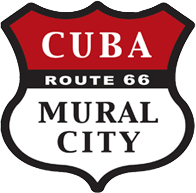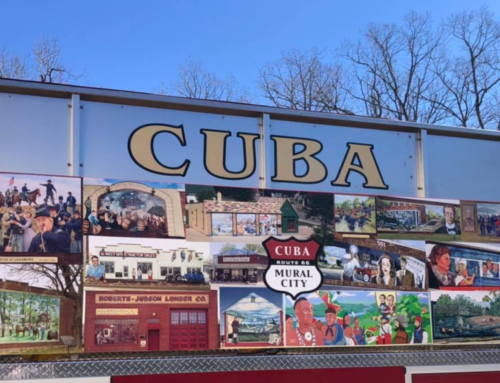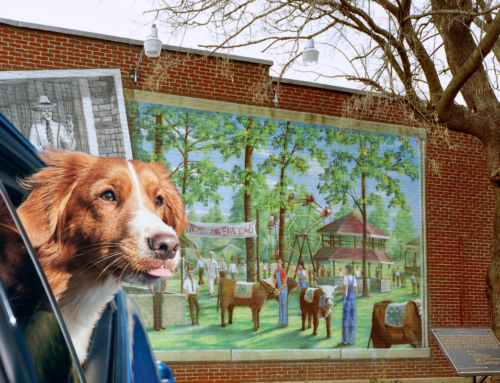Route 66, also known as the “Mother Road,” holds a significant place in American history and the growth of a small town like Cuba, Missouri. An American story in motion, Route 66 was one of the original highways within the U.S. Highway System, stretching approximately 2,448 miles (3,940 kilometers) from Chicago, Illinois, to Santa Monica, California.
For those who have not yet traveled Route 66, it is a trip of a lifetime. It is more than just an old road with history, it’s a highway of happenstance. Here in Cuba, MO, we embrace the heritage of Route 66 in our murals, monuments, and museums.
Here is a brief overview of the history of Route 66:
- Creation and Purpose: Route 66 was established on November 11, 1926, and served as a major transportation route connecting the rural and urban areas of several states, including Illinois, Missouri, Kansas, Oklahoma, Texas, New Mexico, Arizona, and California. It provided a crucial east-west connection and became a popular path for migrants, travelers, and commerce.
- Economic Impact: Route 66 played a vital role in the development of small towns and businesses along its route. The highway brought increased traffic and economic opportunities to these communities, as motels, gas stations, restaurants, and tourist attractions sprung up to cater to the needs of travelers. Many iconic landmarks and businesses became synonymous with Route 66, symbolizing the spirit of American road travel.
- Migration and the Dust Bowl: During the 1930s, Route 66 gained prominence as a route for migrants fleeing the Dust Bowl and seeking a better life in California. Displaced farmers and families from states such as Oklahoma, Texas, and Kansas used the highway to migrate westward in search of employment and opportunities. The famed book, by John Steinbeck, The Grapes of Wrath was the first to coin the phrase the mother road:
“66 is the path of a people in flight, refugees from dust and shrinking land, from the thunder of tractors and shrinking ownership, from the desert’s slow northward invasion, from the twisting winds that howl up out of Texas, from the floods that bring no richness to the land and steal what little richness is there. From all of these the people are in flight, and they come into 66 from the tributary side roads, from the wagon tracks and the rutted country roads. 66 is the mother road, the road of flight.”
- Route 66 in Popular Culture: Route 66 became a symbol of freedom, adventure, and the open road in American popular culture. It was immortalized in literature, songs, movies, and television shows, contributing to its iconic status. Songs like “Get Your Kicks on Route 66” and the popular TV show “Route 66” further cemented its place in the American imagination.
- Decline and Decommissioning: As the Interstate Highway System was developed in the 1950s and 1960s, Route 66 started to lose its importance as a major thoroughfare. Many sections of the road were bypassed by faster and more efficient highways. In 1985, Route 66 was officially decommissioned and replaced by the modern interstate system.
- Route 66 Revival and Preservation: Despite its decommissioning, Route 66 gained a new life as a symbol of nostalgia and Americana. Efforts were made to preserve the remaining portions of the road, and it was designated as a National Scenic Byway in 1990. Numerous preservation organizations, communities, and enthusiasts work to maintain and promote the historic sites and landmarks along Route 66.
“Without preservation efforts, many historic sites could be lost forever. Here in Cuba, MO we value our past with 32 designated preservation locations, 15 history-related outdoor murals, historic landmarks, and other art installations that celebrate our heritage.” Jill Barnett, Viva Cuba Chairperson
Many small towns along Route 66 are preparing for the upcoming centennial celebration in 2024. As you plan your Route 66 journey, stop in small towns and support the local businesses. We invite you to stop in Cuba for a day or a weekend and experience life on the Mother Road.






